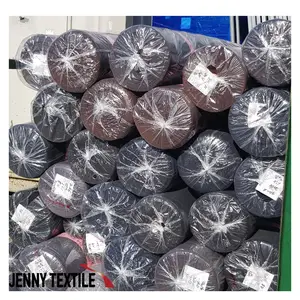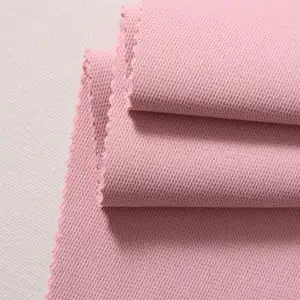In the dynamic world of fashion and textiles, fabric stock textile stocks represent a critical resource for businesses looking to secure high-quality materials for their product lines. These stocks encompass a wide range of materials, patterns, and uses, catering to a diverse array of applications from home textiles to high-fashion garments. The following sections delve into the multifaceted nature of fabric stock textile stocks, offering an in-depth analysis of their types, materials, business usages, features, benefits, and maintenance.
Types and Patterns of Fabric Stock Textile Stocks
The variety of fabric stock textile stocks on Alibaba.com is extensive, ranging from plain dyed to intricately patterned options such as polka dot and tie-dyed fabrics. The assortment includes modern and casual styles, as well as specialized patterns like digital printed textiles, catering to the ever-evolving demands of the fashion industry. This diversity allows businesses to select the perfect textile to match their specific design vision and target audience. Beyond the aesthetic variety, these stocks also include performance-oriented types such as quick-dry and wrinkle-resistant fabrics, which are essential for active and travel wear. The ITY stock lot fabric, known for its elasticity, is particularly sought after for its performance in active wear, while the wool linen fabric stocks are chosen for their natural feel and durability, ideal for premium men's wear.
Structure and Composition of Fabric Stock Textile Stocks
The structure of fabric stock textile stocks is a complex interplay of fibers and weaving techniques. The physical components such as yarn type, weave density, and finish all contribute to the functionality and aesthetic of the fabric. For instance, weft suede fabrics are constructed with a focus on the horizontal threads, giving them a distinctive texture and resilience. Warp suede, on the other hand, emphasizes the vertical threads, providing a different kind of strength and drape. The operational process, from the spinning of the yarn to the final textile product, is meticulously engineered to ensure consistency and quality. Understanding the structure of these textiles is crucial for businesses, as it directly impacts the usability and wearability of the final product.
Materials and Properties of Fabric Stock Textile Stocks
The materials used in fabric stock textile stocks are chosen for their specific properties to meet the demands of various applications. Polyester, for instance, is widely used for its strength, resistance to shrinking and stretching, and quick-drying capabilities. Viscose and rayon offer a silk-like feel and are highly absorbent, making them suitable for comfort-oriented apparel. The benefits of these materials are manifold, including cost-effectiveness, durability, and versatility, which are essential for a wide range of business needs. Additionally, the incorporation of nylon can enhance the fabric's abrasion resistance and elasticity, making it an excellent choice for sportswear and outdoor gear.
Business Usages and Applications
Fabric stock textile stocks serve a multitude of business usages, from home textiles to accessories. They are particularly valuable in the production of coats, jackets, costumes, sleepwear, and even technical garments like cycling wear. The versatility of these stocks makes them a go-to resource for businesses catering to different segments, including girls, boys, infants, women, and men. In the home textiles sector, these fabrics can be used to create luxurious bed linens, stylish curtains, and durable upholstery, adding both comfort and elegance to any living space. In the fashion industry, the ability to quickly adapt to trends with a variety of fabric stocks means businesses can offer consumers the latest styles without significant lead times.
Functions and Tasks of Fabric Stock Textile Stocks
The primary function of fabric stock textile stocks is to provide a versatile base for the creation of a multitude of products. They are designed to perform specific tasks, such as providing warmth, ensuring comfort, or enhancing the aesthetic appeal of a garment. For example, coated fabrics like PU or PVC coated textiles are engineered to offer water and wind resistance for outdoor wear. Additionally, the anti-static properties of certain fabric stocks make them ideal for use in environments where static control is crucial, such as in the production of electronic device cases or in certain workwear applications.
Features and Unique Selling Points
The distinct characteristics of fabric stock textile stocks include features like anti-static, tear-resistant, and shrink-resistant capabilities. These unique selling points set them apart from competitors, as they cater to specialized needs such as the requirement for static-free clothing in certain electronic manufacturing environments or durable textiles for children's wear. Moreover, the availability of multi-colored and black textiles provides a broad palette for designers to work with, ensuring that there is a fabric stock to suit any creative or branding requirement.
Benefits and Positive Outcomes
The benefits of using fabric stock textile stocks are numerous. They solve problems such as the need for quick-drying sportswear or wrinkle-resistant travel clothing. The positive outcomes for the user include improved comfort, enhanced performance, and satisfaction with the longevity and appearance of the product. For businesses, the use of these stocks can lead to a more streamlined production process, as the wide variety of available fabrics means that sourcing materials for different product lines can be done quickly and efficiently.
How to Choose the Right Fabric Stock for Your Business?
Selecting the right fabric stock textile stocks involves understanding the specific needs of your target market and the functional requirements of the end product. Factors to consider include the fabric's drape, weight, and stretch. For instance, choosing a high-quality polyester blend might be ideal for sportswear due to its durability and moisture-wicking properties. When considering home textiles, the focus might shift to the fabric's ability to drape elegantly or resist wear and tear over time. Businesses must also consider the supply type, whether it's make-to-order or in-stock items, to ensure that the fabric availability aligns with production schedules and market demands.
What Are the Latest Trends in Fabric Stock Textile Stocks?
The latest trends in fabric stock textile stocks include a growing emphasis on sustainability and eco-friendly materials. Advances in textile technology have also led to the development of smart fabrics with embedded sensors for health monitoring, which are gaining popularity in the sportswear and medical industries. The fashion industry is seeing a surge in demand for digital printed fabrics, allowing for high-definition patterns and vibrant colors that stand out in the marketplace.
How to Ensure the Quality of Fabric Stock Textile Stocks?
Ensuring the quality of fabric stock textile stocks involves a thorough assessment of the supplier's credentials, material certifications, and customer reviews. Sampling is also a critical step, allowing businesses to test the fabric's properties and suitability for their specific needs before committing to a large order on Alibaba.com. Quality control measures such as tensile strength tests, colorfastness checks, and wear resistance evaluations are essential to ensure that the fabric stock meets the high standards expected by businesses and their customers.






































 浙公网安备 33010002000092号
浙公网安备 33010002000092号 浙B2-20120091-4
浙B2-20120091-4